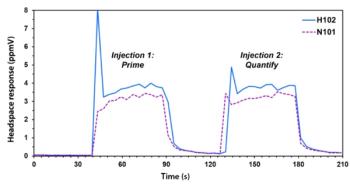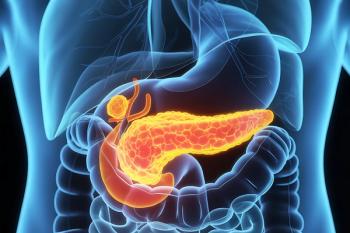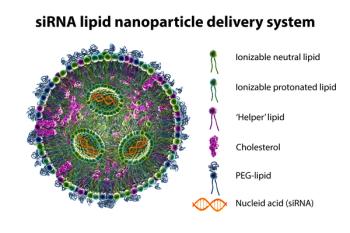
- Special Issues-08-01-2017
- Volume 35
- Issue 8
Complex Matrices Analysis by Direct-Immersion SPME with Matrix-Compatible Coatings: A New Approach Compatible with Automation
The analysis of complex matrices always poses the ultimate challenge to the analytical chemistry community with regards to targeted and untargeted analyses. The major reason being sample preparation and separation strategies always seek to guarantee “cleaner extracts” that provide enough analyte enrichment while ensuring negligible instrument contamination and matrix effects. In the process, to date, sample preparation approaches for the analysis of complex matrices are characterized by multiple and tedious steps that most often require larger solvent volumes, with low throughput.
The analysis of complex matrices always poses the ultimate challenge to the analytical chemistry community with regards to targeted and untargeted analyses. The major reason being sample preparation and separation strategies always seek to guarantee “cleaner extracts” that provide enough analyte enrichment while ensuring negligible instrument contamination and matrix effects. In the process, to date, sample preparation approaches for the analysis of complex matrices are characterized by multiple and tedious steps that most often require larger solvent volumes, with low throughput.
For nearly two decades, targeted analysis of contaminants in food commodities has been mostly carried out by the QuEChERS (quick, easy, cheap, effective, rugged, and safe) method, which upon its introduction revolutionized the field of food analysis with a simplified sample preparation approach compared to conventional methods. The popularity of this technique and the copious applications developed in many analytical laboratories around the world led to its implementation as a standard method (European Standard Method EN 15662.2008 and the AOAC 2007.01) and its use by various regulatory agencies (United States Department of Agriculture [USDA], US Food and Drug Administration [FDA], European Food Safety Authority [EFSA]) (1).
Another sample preparation technique was developed in the early 1990s, solid-phase microextraction (SPME) (2), and it emerged for the analysis of contaminants in food. However, at the time, its application was confined to headspace approaches (HS) because of the scarcity of robust extraction phase coatings for complex food matrices. HS-SPME provided optimized and fully quantitative methods for multiresidue analysis of various food matrices, which involved greener and faster protocols with minimized use of organic solvents. In addition, the SPME devices were reusable for multiple sampling cycles, thus lowering the ecological impact of the analytical protocols.
The main limitation of these HS-SPME approaches, however, was the limited vapor pressure of most of the targeted analytes (pesticides, in particular), which affects the limits of quantitation (LOQ) achievable because of low partition of targeted analytes into the sample HS. In light of this limitation, the need for a matrix-compatible, robust SPME extraction phase became indispensable for any further extension of the technique to direct analysis of complex matrices.
The first report of a robust and reliable coating for direct-immersion (DI) SPME in food samples was released in 2012 (3). The new SPME coating consisted of a modification of an already commercially available extraction phase (polydimethylsiloxane [PDMS]-divinylbenzene [DVB]) over-coated with a smooth, thin layer of PDMS that prevented the attachment of matrix constituents that were responsible for the deterioration of the classical SPME coatings and high background in the obtained chromatograms. Subsequently, several methods were developed that demonstrated not only the robustness of the new SPME device toward direct exposure to untreated food samples, but also its superior performance compared to that of the QuEChERS method.
In particular, different reports (4,5) indicate that, in comparison studies with QuEChERS, the DI-SPME methods developed with the new matrix-compatible coating provided the following benefits:
- Simplified analytical throughput (Figure 1) with ease of automation of the technique.
- Comparable or improved LOQ and accuracy values for the targeted analytes.
- Introduction of “cleaner” extracts of targeted analytes into the analytical system, resulting in less populated chromatograms.
Moreover, a quick and effective pre- and post-desorption cleaning protocol further enhanced the coating lifetime. It is important to mention that the parameters associated with cleaning steps should be optimized according to the type and matrix composition for the most effective results (6).
Among the advantages of matrix-compatible SPME coatings, the minimization of instrument contamination, matrix effects, and chromatographic interferences is very important to guarantee unbiased results and high method throughput. This characteristic of the coating is especially useful for the direct coupling of the technique to mass spectrometry (MS), since interferences related to the sample matrix are significantly minimized (7). In fact, the use of matrix-compatible coatings on SPME devices with alternative geometries--for example, SPME transmission mode (SPME-TM)-enabled the rapid screening and quantitation of pesticides in various food matrices at low parts-per-billion levels by direct analysis in real time (DART) ionization coupled to benchtop and portable instrumentation (8,9).
Regarding untargeted screening and metabolomics-targeted analysis, matrix-compatible coatings offer the unique benefit of enabling the extraction of a very broad range of chemical features because of the direct exposure in the targeted matrix (compared to classical HS-SPME). The ability of the technique to provide a comprehensive snapshot of the chemical composition of certain biosystems, in addition to its miniaturized and portable geometry, makes it amenable to in vivo and on-site sampling (10,11).
Considering the numerous benefits related to the use of this new device within the “SPME tool box,” rapid growth in the number of applications and methods developed can be envisioned in the future. We hope those developments will lead to the consequent implementation of the technique for standard methods by regulatory agencies, following the same path as the QuEChERS method.
Recently, research focused on the achievement of a matrix-compatible and antifouling coating for SPME has been very active. Besides PDMS-based matrix compatible coatings, which have been commercially available since 2016, other materials (for example, polyacrylonitrile [12] and amorphous fluoroplastics [13]) have been successively tested and proven to be compatible to biofluids and environmental matrices. Future challenges associated with the use of these types of matrix-compatible coatings will involve the direct analysis of oils and dry matrices for determination of multiclass contaminants.
References
- M.Á. González-Curbelo, B. Socas-Rodríguez, A.V. Herrera-Herrera, J. González-Sálamo, J. Hernández-Borges, and M.Á. Rodríguez-Delgado, TrAC Trends Anal. Chem. 71, 169–185 (2015).
- C.L. Arthur and J. Pawliszyn, Anal. Chem.62(19), 2145–2148 (1990).
- É.A. Souza Silva, Anal. Chem. 84(16), 6933–6938 (2012).
- É.A.S. Silva, V. Lopez-Avila, and J. Pawliszyn, J. Chromatogr. A 1313, 139–146 (2013).
- K.K. Stenerson, T. Young, R. Shirey, Y. Chen, and L.M. Sidisky, LCGC North Am.34(7), 500–509 (2016).
- S. De Grazia, E. Gionfriddo, and J. Pawliszyn, Talanta167, 754–760 (2017).
- H. Piri-Moghadam, F. Ahmadi, G.A. Gómez-Ríos, E. Boyacı, N. Reyes-Garcés, A. Aghakhani, B. Bojko, and J. Pawliszyn, Angew. Chem. Int. Ed. Engl.55(26), 7510–4, doi: 10.1002/anie.201601476 (2016).
- G.A. Gomez-Rios, T. Vasiljevic, E. Gionfriddo, M. Yu, and J. Pawliszyn, Analyst, in press (2017).
- G.A. Gomez-Rios, E. Gionfriddo, J. Poole, and J. Pawliszyn, Anal. Chem., in press (2017).
- S. Risticevic, E.A. Souza-Silva, J.R. Deell, J. Cochran, and J. Pawliszyn, Anal. Chem. 88, 1266–1274 (2016).
- F.C. Fontanive, É.A. Souza-Silva, E. Caramao, C.A. Zini, J. Pawliszyn, L.M. Sidisky, M.D. Buchanan, and D. Vitkuske, Reporter, Appl. Newsl.34.1, 3–7 (2016).
- M.L. Musteata, F.M. Musteata, and J. Pawliszyn, Anal. Chem. 79(18), 6903–6911 (2007).
- E. Gionfriddo, E. Boyaci, and J. Pawliszyn, Anal. Chem.89(7), 4046–4054 (2017).
Janusz Pawliszyn and Emanuela Gionfriddo are with the Department of Chemistry at the University of Waterloo in Waterloo, Ontario, Canada.
Articles in this issue
over 8 years ago
Measuring Water: The Expanding Role of Gas Chromatographyover 8 years ago
Analytical Characterization of Biopharmaceuticalsover 8 years ago
Multidimensional Liquid Chromatography Is Breaking Throughover 8 years ago
Proteoforms: A New Separation Dilemmaover 8 years ago
Having It All, and with Any Mass Spectrometerover 8 years ago
Separations: A Way ForwardNewsletter
Join the global community of analytical scientists who trust LCGC for insights on the latest techniques, trends, and expert solutions in chromatography.





